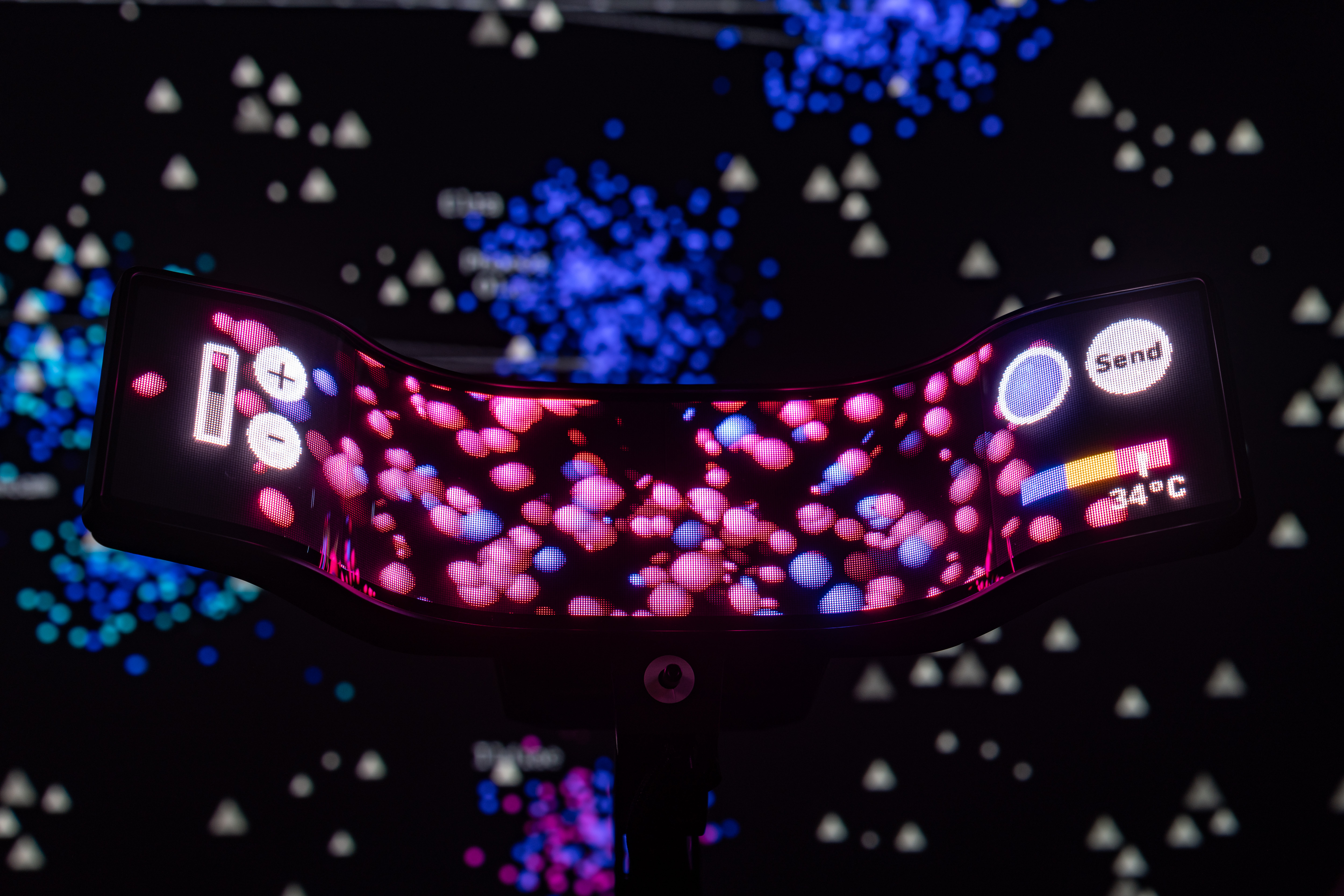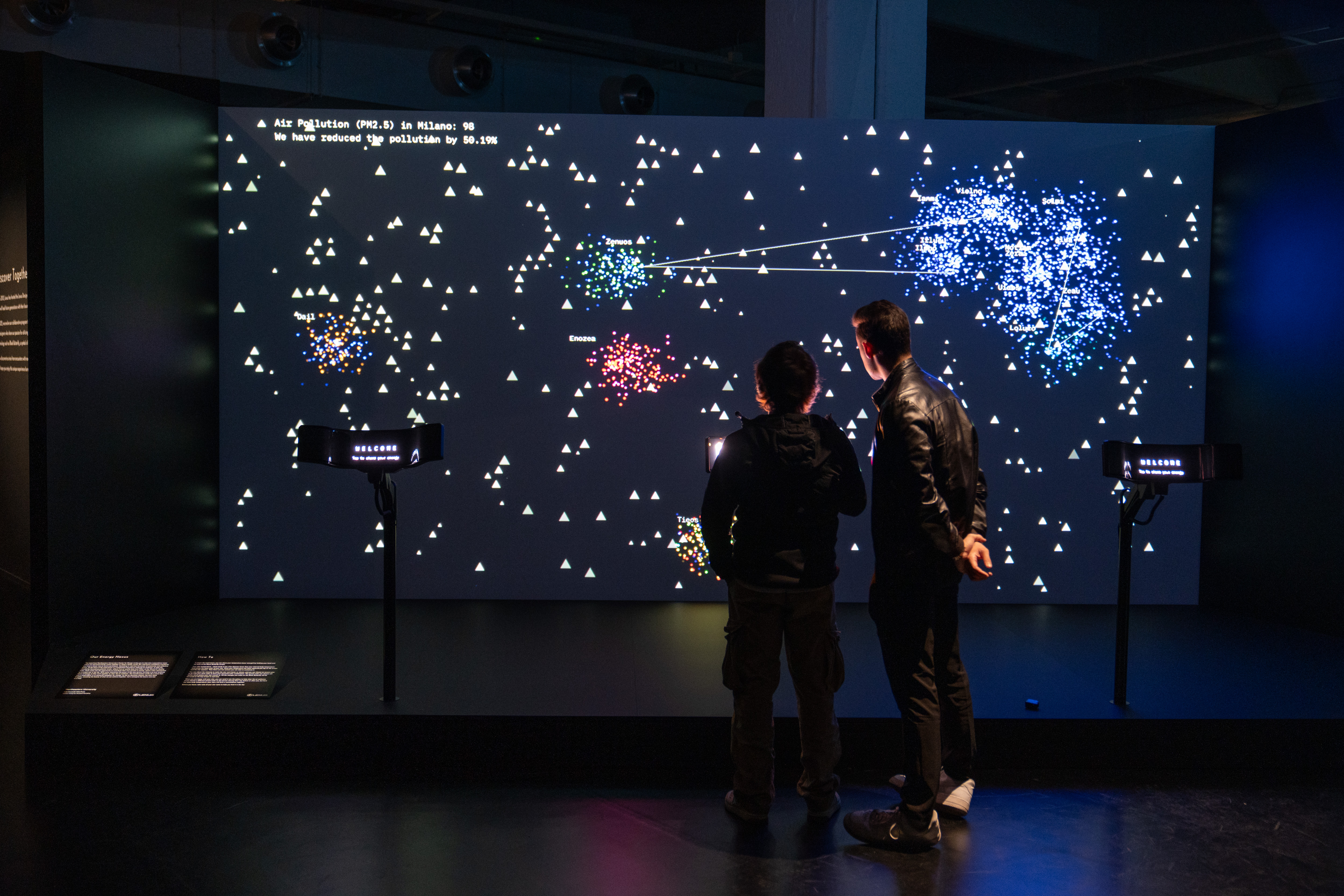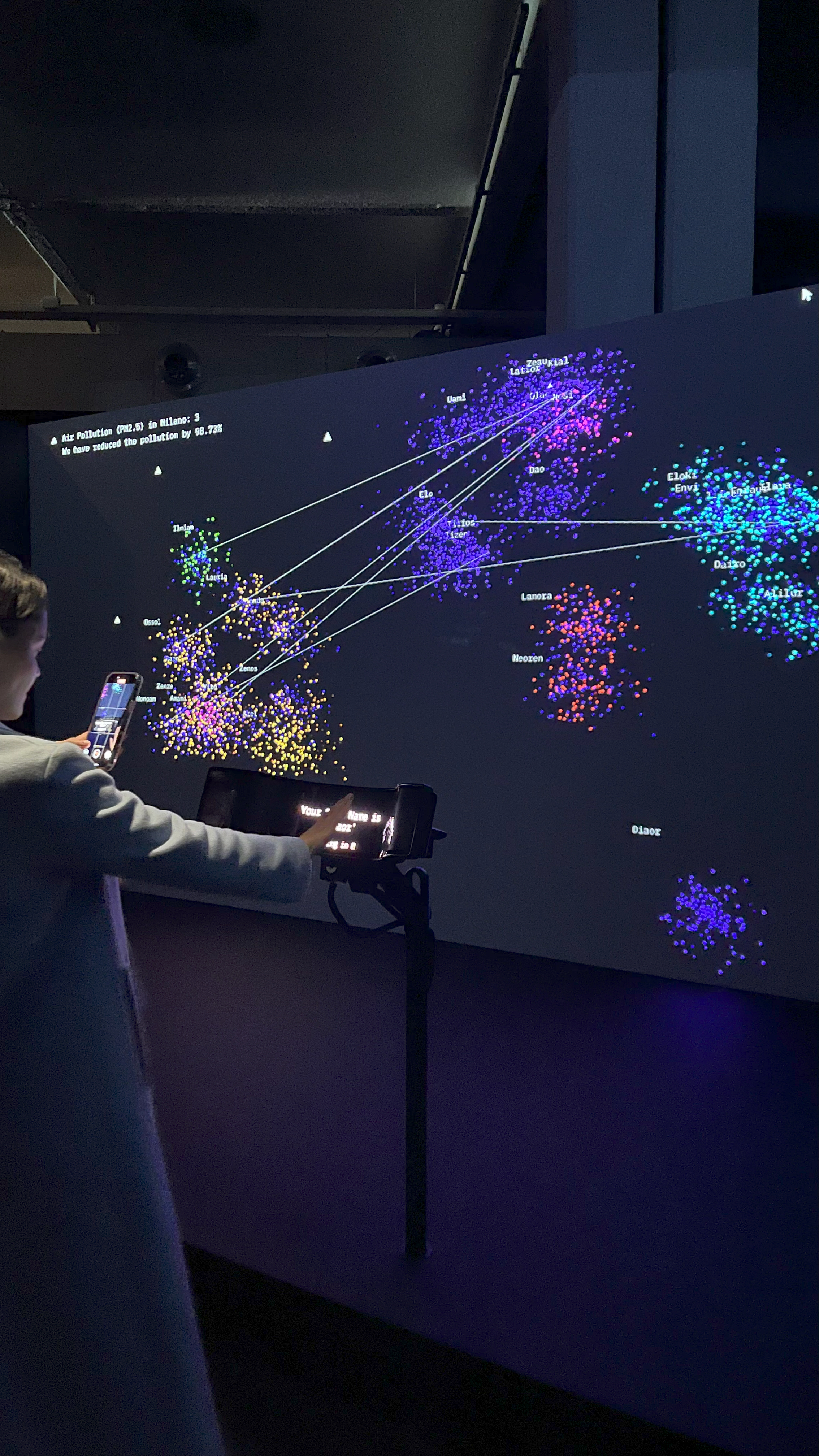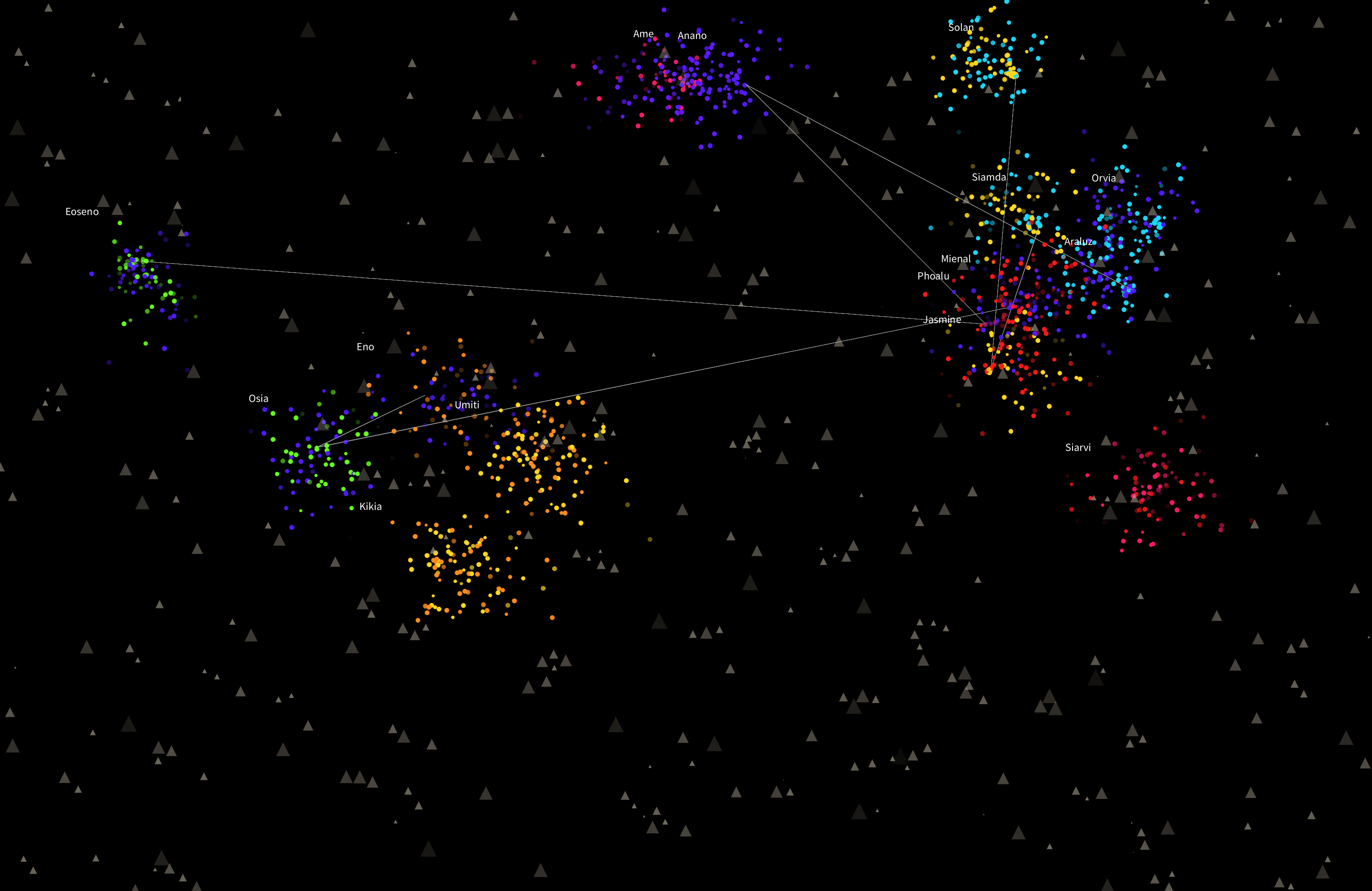




Our Energy Nexus is an interactive installation reimagining energy as a collective force capable of shaping our world. Individual actions cannot solve environmental crises—which require systemic policy changes and corporate accountability—so this installation explores awareness and hope as starting points for collective action:
“Hope is crucial to the act of protest: hope is what allows us to feel that what angers us is not inevitable, even if transformation can sometimes feel impossible. […] If we give up hope, of course, then there is no hope. So the emotion of hope keeps something open.” (Sarah Ahmed, The Cultural Politics of Emotion, pg 184-85).
The installation begins with a visualization of a dark sky clouded by air pollution. The rendering of pollution is based on live data from the World Air Quality Index. On a secondary interface, users contribute their “energy” through skin temperature readings, generating a unique star inspired by thermal radiation science, in which the visible color of radiant energy is defined by temperature. The stars are sent to the shared visualization, triggering a speculative pollution reduction.
Energy here has multiple meanings. Physically, it represents the warmth of our bodies, the color of stars, and the source of both the problem we face and its solution. Air pollution in major cities often stems from the way we produce and consume energy. Yet the same concept—energy—also holds the potential for transformation. Clean, shared, and reimagined energy systems are necessary for a future without air pollution. Maintaining hope in this possibility is part of maintaining energy to work towards this version of the future. Symbolically, energy represents our agency: our capacity to act, collaborate, and shape the world that we share, while the act of stargazing becomes a gesture of hope. This piece is designed as a meditation on collective potential, not an end in itself; clearing skies requires concrete action and sustained energy.
This work was initially supported by Lexus as part of their “Discover Together” initiative at Milan Design Week, which platforms emerging creators. We were asked to incorporate their “Black Butterfly” screens with large-scale projection, shaping our interactive approach. The client supported our creative freedom; our choice to work with environmental data stems from our team's interests. We accepted this commission because it offered resources and visibility otherwise inaccessible to early-career designers, and because we believed we could create work that engaged honestly with environmental challenges. We remain committed to the conversations this work has sparked. We don’t wish to offer hope as a substitute for anger at systems that continuously fail us on unequal terms. We maintain our conviction in the importance of hope in the possible—most especially in the face of hopelessness.
Chloe Prock Northeastern University
Elizabeth McCaffrey Northeastern University
Jasmine Yiming Sun Design Assistant, Northeastern University
Paolo Ciuccarelli Advisor, Northeastern University